Vietnamese painting is a priceless treasure trove of art, preserving profound cultural and historical values, expressed through the talented lens of generations of artists. From mystical lacquer paintings to vivid oil paintings, each work is a story, a piece contributing to the panoramic picture of Vietnam and its people. Join “Du Lịch Khắp Thế Gian” (Discovery Around The World) to explore these painting masterpieces that have captured hearts and become the pride of the nation.
Timeless Masterpieces by Vietnam’s Four Pillars of Painting
When it comes to Vietnamese painting, one cannot ignore the “four pillars” of Indochinese fine arts: Tri, Van, Lan, Can. They were pioneers, laying the foundation for modern Vietnamese painting, with works bearing strong personal imprints and timeless artistic value.
“Spring Garden of Central, Southern, and Northern Vietnam” Lacquer Painting by Nguyen Gia Tri
Nguyen Gia Tri (1908 – 1993), known as the “father” of modern Vietnamese lacquer painting, spent 20 years (1969 – 1989) completing his masterpiece “Spring Garden of Central, Southern, and Northern Vietnam”. The painting is composed of 9 panels, depicting the beauty of women from the three regions of North, Central, and South Vietnam in traditional costumes, joyfully singing together, expressing solidarity and youthful vitality amidst the vast natural scenery.

“Spring Garden of Central, Southern, and Northern Vietnam” is not just a work of art, but also a cultural symbol, embodying the spirit of harmony and unity of the Vietnamese nation. The painting is currently displayed at the Ho Chi Minh City Museum of Fine Arts and is recognized as a national treasure, prohibited from being taken out of Vietnam.
“Young Lady with Lily” – The Pure Beauty of To Ngoc Van
To Ngoc Van (1906 – 1954), one of Vietnam’s most talented painters, left a deep impression on art lovers with his oil painting “Young Lady with Lily” (1943). The painting depicts a graceful young woman in a white Ao Dai, leaning her head beside a vase of pure white lilies.

The harmonious combination of white tones creates a simple, pure beauty, yet also faintly reflects a melancholic sadness. “Young Lady with Lily” is considered a masterpiece of Vietnamese painting, expressing the gentle, graceful beauty of Vietnamese women. Sadly, no one knows where the painting is currently located.
“Two Young Ladies and a Baby” – A Poetic Everyday Moment
Another highly acclaimed oil painting by To Ngoc Van is “Two Young Ladies and a Baby” (1944). The painting recreates a simple everyday moment: two young women in flowing Ao Dai sitting and chatting on the porch, a baby playing alone beside them.

The triangular composition with three figures creates balance and tranquility, bringing a sense of peace and serenity. The combination of Western painting style and Vietnamese characteristics such as bamboo blinds and bamboo beds has created a unique, distinctly Vietnamese work. The painting is currently displayed at the Vietnam National Museum of Fine Arts and is recognized as a national treasure.
“Little Thuy” – Innocent Beauty That Made History
Tran Van Can, one of the “four pillars” of Vietnamese painting, created a timeless masterpiece with his oil painting “Little Thuy” (1943). The painting is a portrait of little Thuy sitting on a rattan chair, painted in a realistic expression style, without any exaggeration.
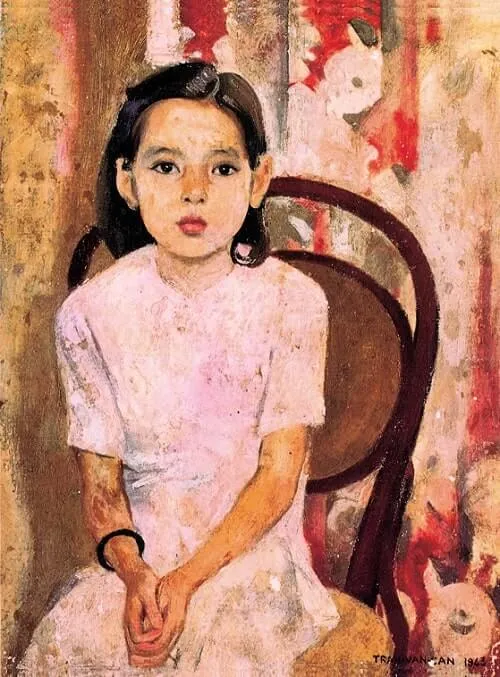
The innocent, pure beauty of Little Thuy is delicately depicted by the artist, capturing the viewer’s gaze. The painting “Little Thuy” was recognized as a national treasure in 2014 and is currently displayed at the Vietnam National Museum of Fine Arts.
“Party Admission at Dien Bien Phu” – Heroic Spirit of the Nation
Nguyen Sang (1923 – 1988) recreated a significant historical event of the nation through his painting “Party Admission at Dien Bien Phu” (1965). The painting depicts Dien Bien Phu soldiers being admitted to the Party right on the battlefield, expressing the heroic, determined spirit in the resistance war against the French.
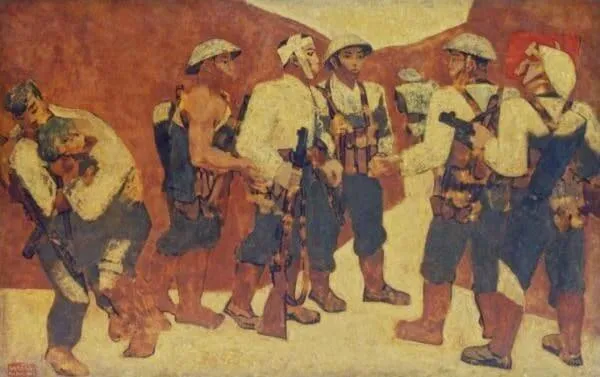
The dominant colors in the painting are traditional colors such as vermilion red, gold, and silver, creating solemnity and spirit. The painting is not only of artistic value but also a valuable historical document, contributing to the study of the glorious Dien Bien Phu victory.
Other Famous Vietnamese Paintings
In addition to the works of the “four pillars”, Vietnamese painting also has many other masterpieces, showing diversity in style and subject matter, contributing to the richness of Vietnamese culture.
The painting “Uncle Ho at Viet Bac War Zone” is a typical work, depicting the beloved leader during the arduous years of resistance. The painting shows Uncle Ho’s closeness and simplicity with the people, while also expressing the optimistic spirit and resilient will of the nation.
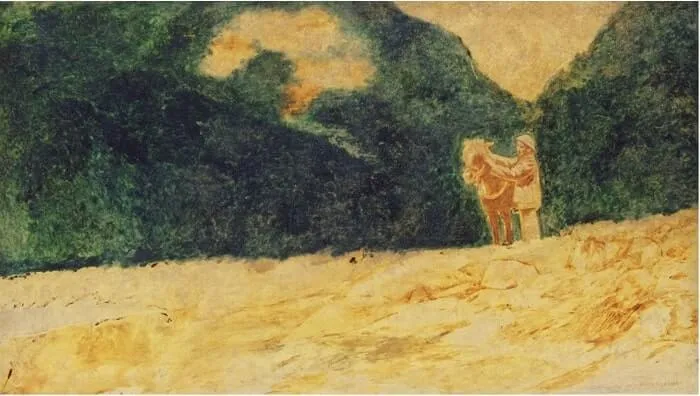
“Nostalgia” by Le Pho is an emotional painting, expressing the deep homesickness of a person far from home. The painting uses bright colors and soft lines, creating a poetic space, reminiscent of beautiful childhood memories.
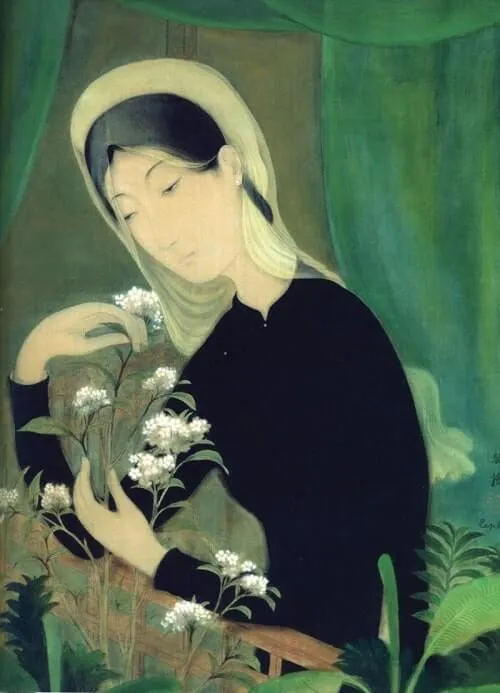
“The Rice Seller” by Nguyen Phan Chanh is a famous silk painting, depicting the image of hard-working Vietnamese women enduring hardship in their livelihoods. The painting uses warm, muted colors and simple lines, creating a realistic and touching picture of the lives of working people.
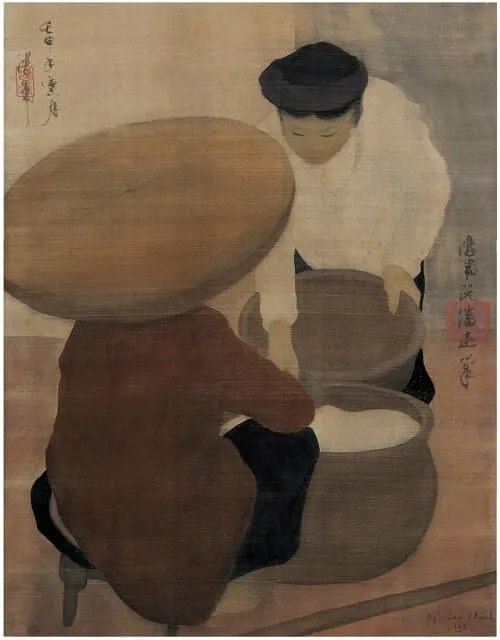
The oil painting “View from the Hilltop” is also a noteworthy work by Le Pho. The painting shows the majestic beauty of Vietnamese nature, with rolling hills and lush green fields.

“Giong” by Nguyen Tu Nghiem is a unique lacquer painting, depicting the brave, extraordinary figure of Saint Giong in legend. The painting uses vibrant colors and strong lines, creating a powerful and impressive image of the national hero.
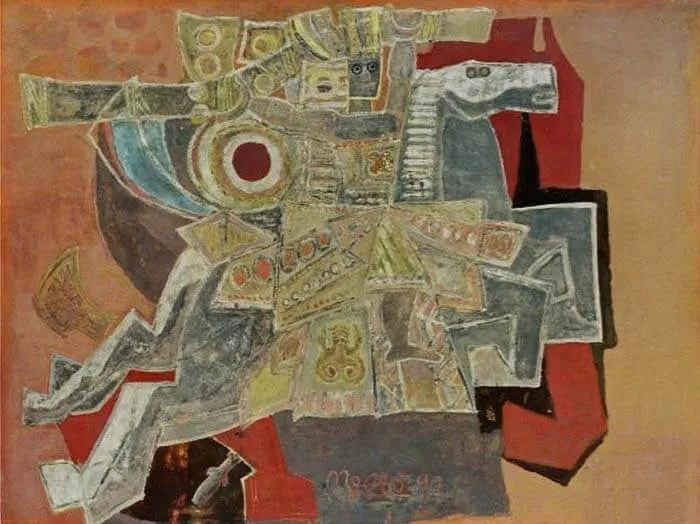
Conclusion
The famous paintings of Vietnam are not only artistic masterpieces but also historical witnesses, cultural symbols, expressing the spirit, soul, and identity of the Vietnamese nation. Exploring and cherishing these works is a way for us to better understand the history, culture, and people of Vietnam, while contributing to preserving and promoting the precious artistic values of the nation. Which artwork introduced above impressed you the most? Share your feelings with “Du Lịch Khắp Thế Gian” (Discovery Around The World)!